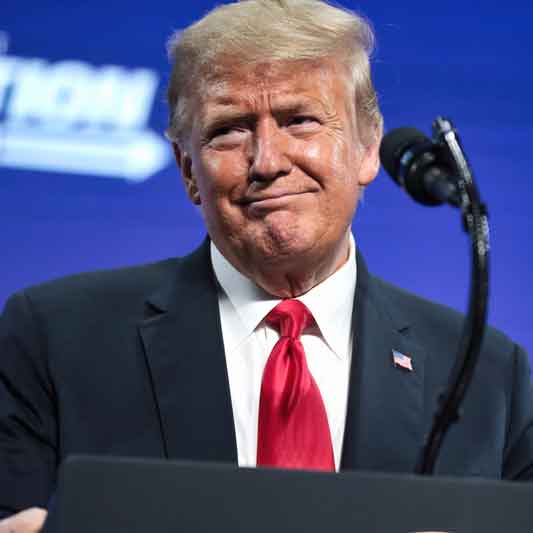The White House has directed the U.S. military to devise various strategies concerning the Panama Canal, including potentially seizing it by force, according to a report released last week.
This directive follows President Donald Trump’s recent address to Congress, where he announced plans to take control of the 50-mile canal to enhance national security. Trump stated, “My administration will be reclaiming the Panama Canal, and we’ve already started doing it.” The military is exploring options ranging from ensuring safe passage for American ships to possibly reestablishing full U.S. ownership of the canal, which was constructed by the U.S. in the early 1900s and gradually transferred to Panama in the 1970s.
Unnamed officials informed NBC News that the use of military force to seize the canal is considered less likely but remains under consideration. The level of cooperation from the Panamanian military will be crucial in determining the necessity of military action.
Panamanian officials have reportedly responded, “Our sovereignty over the Panama Canal is absolute and not the basis of any negotiation.”
The Trump administration’s interest in controlling the canal is driven by concerns over Chinese influence in the area. President Trump has asserted that Chinese forces are “controlling” the canal and claimed that Panama is overcharging the U.S. for its use. Both Panama and China have denied these claims.
Panamanian President José Raúl Mulino has dismissed Trump’s assertions as “nonsense” and rejected the idea of relinquishing control of the canal. “It’s impossible. I can’t negotiate,” Mulino stated in January. “That is done. The canal belongs to Panama.”
The military is considering several strategies, including securing existing ports, constructing new ones, or deploying the Army Corps of Engineers to operate the canal’s locks. Discussions have also involved the possibility of opening Army Jungle Schools or training camps similar to those previously established in Panama.
The White House believes that deploying U.S. troops in Panama could diminish China’s influence in the region. In a regional conflict, these forces might block Chinese vessels from using the canal. The U.S. currently has over 200 troops in Panama, including Special Forces units collaborating with Panamanian security forces.
Secretary of Defense Pete Hegseth is scheduled to visit Panama next month to discuss increasing the U.S. troop presence in the canal zone. The administration maintains that the U.S. has the right to ensure free navigation through the Panama Canal, a vital route for global trade.
Panama’s constitution enshrines the canal’s neutrality. The U.S. and Panama are bound by a treaty to defend the canal’s neutrality, allowing both nations to take unilateral action if necessary.
Although China is the second-largest user of the canal, experts have found no evidence of Chinese control or operation of the waterway. The Panama Canal Authority, a Panamanian government agency, operates the canal. However, Chinese investments in nearby ports and infrastructure have raised concerns among U.S. officials about China’s increasing regional influence.
CK Hutchison Holdings, a Hong Kong-based conglomerate, has long held a concession to operate major port terminals at the canal’s Atlantic and Pacific entrances. While some U.S. officials view this as a strategic concern, Panama emphasizes that these commercial operations are separate from canal traffic management. Both Panama and China deny any Chinese control over the canal.
Reuters reports that there is no evidence supporting Trump’s claim of Chinese control, noting that while Chinese investments are substantial, they do not involve running the canal.
The majority of vessels using the canal are either headed to or coming from the U.S. A disruption or closure of the canal would force ships to travel around South America, increasing shipping time and costs.
Last month, Secretary of State Marco Rubio visited the canal, claiming to have brokered a deal allowing U.S. ships to pass through without fees. However, Mulino quickly refuted this, and Rubio later clarified that these were his “expectations” rather than an agreement.
Historically, Panama has been a close U.S. ally since former President Theodore Roosevelt recognized its independence in 1903. The current tensions represent a significant shift in the generally positive relationship between the two nations.
Any military action to seize the canal could violate international law and harm U.S. relations with Panama and other regional nations.
Multiple reputable sources confirmed to Reuters that an interim national security directive instructed the Pentagon to ensure “full access” to the canal and consider military options for its protection. U.S. Southern Command (SOUTHCOM) has proposed options ranging from closer cooperation with Panama’s security forces to the less likely scenario of U.S. troops seizing the canal. Admiral Alvin Holsey, SOUTHCOM commander, presented draft strategies to Defense Secretary Hegseth.
The Panama Canal was fully transferred to Panama in 1999, granting it complete sovereignty. However, the Panama Canal Neutrality Treaty ensures the canal remains neutral and open to ships of all nations. If the canal’s neutrality is threatened, either country can act to protect it.
U.S. officials sometimes cite this treaty to justify a protective role over the canal. However, the treaty does not grant the U.S. the right to interfere in Panama’s internal affairs or station troops permanently at the canal. The DeConcini Reservation clarifies that while the U.S. can act unilaterally to defend the canal’s neutrality, it cannot compromise Panama’s sovereignty.
U.S. military action is only legal to counter threats to the canal, not to assert ownership. An attempted invasion to control the canal without a neutrality threat would likely violate international law and treaty terms.
Legal experts and U.S. allies agree that seizing the canal would breach Panama’s sovereignty and the UN Charter. Any attempt by a foreign power to take control of the canal by force would be illegal under the treaties.
The Panama Canal remains a critical waterway for global commerce, connecting the Atlantic and Pacific Oceans and enabling ships to bypass the lengthy journey around South America. Its strategic importance has long attracted international focus.

